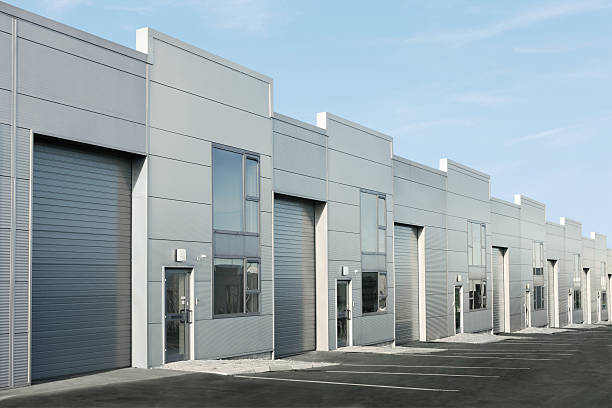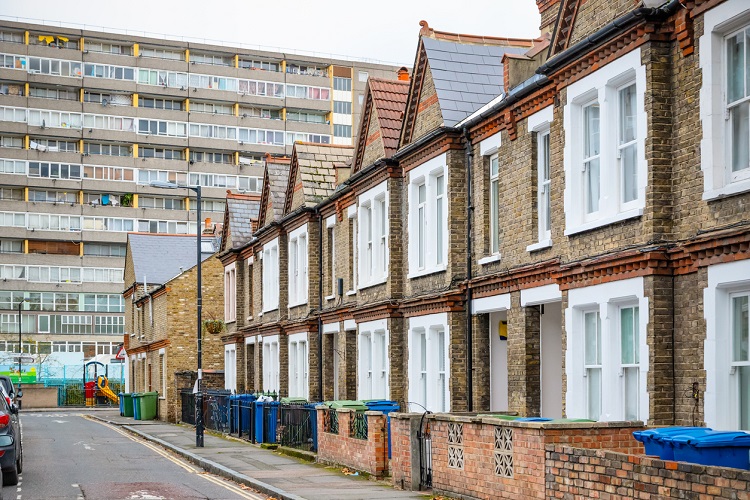Investing in commercial property can be a game-changer for anyone looking to build wealth or diversify their investment portfolio. The UK market, in particular, offers plenty of potential, but it also comes with its own unique set of challenges. If you’re considering stepping into the world of commercial property investment, you’ll want to know the basics and a few tricks of the trade.
What is Commercial Property Investment?
Commercial property refers to buildings or land used for business purposes. This includes offices, retail spaces, warehouses, and industrial units. Unlike residential property, where tenants are individuals or families, commercial tenants are businesses. This distinction brings its own set of advantages and challenges.
For instance, commercial leases tend to be longer—often five to ten years—which can provide stable, predictable income. On the flip side, finding the right tenant can take time, and vacancies can hit your cash flow hard.
Why Invest in Commercial Property?
Okay, so you get what commercial property is, but why should you consider investing in it? Here’s the thing: there are plenty of compelling reasons why commercial property is a popular investment choice for many. If done right, it can bring in steady income, capital growth, and greater diversification for your portfolio.
Let’s break down the advantages in more detail.
1. Higher Yields
One of the most attractive aspects of commercial property investment is the potential for higher yields compared to residential property. On average, commercial properties can deliver returns of anywhere between 5% to 10%, or even higher, depending on the type of property, location, and demand.
Now, the exact yield will vary based on factors like market conditions and the specific property type, but generally, commercial properties provide a better return on investment than residential properties. Residential properties might offer rental returns of 3-5% on average, while commercial properties can push that higher.
This is especially true in high-demand areas or sectors with limited supply, such as office spaces in major cities like London or industrial units in logistics hotspots.
2. Stable Income
Another big draw is the predictable and stable income stream. Most commercial leases are long-term—often ranging from 5 to 25 years—and they’re typically signed with businesses, which tend to be more financially stable than individual tenants. Businesses, especially established ones, are less likely to default on their rent, meaning you’re more likely to receive regular payments over a long period.
In many cases, commercial tenants will also be responsible for the maintenance of the property or pay for property-related costs, like insurance and taxes. This setup can offer you more peace of mind than renting to residential tenants who may cause damage, stop paying rent, or have more unpredictable circumstances. With business tenants, there’s often the added bonus of higher rents due to their long-term nature.
3. Capital Growth
Commercial properties don’t just offer regular income; they also have the potential for capital growth. Over time, the value of commercial properties tends to rise, particularly if they are located in high-demand areas or if they are part of a growing market. For example, office spaces in central business districts or industrial properties near major transportation hubs can see substantial capital appreciation.
The demand for commercial properties in specific locations fluctuates, but properties located in prime areas or undergoing regeneration can significantly increase in value over time. This appreciation, coupled with rental income, can create a lucrative combination for investors looking to both make money in the short term (through rent) and see long-term returns (through property value increases).
Also, commercial property values tend to increase with inflation, so your investment is likely to keep pace with the wider economy. This can provide some protection against market volatility.
4. Diversification of Portfolio
When you’re building an investment portfolio, diversification is essential to reduce risk. Commercial property allows you to do just that. Unlike stocks or bonds, commercial property investments offer a physical asset that can provide long-term security. Investing in commercial property adds a layer of diversification because real estate markets often move independently of stock markets, offering a hedge against economic downturns.
By diversifying into different types of commercial properties, like retail, office, or industrial units, you can spread your risk and protect yourself from fluctuations in one specific sector. If one type of commercial property faces a downturn, another might thrive, keeping your overall portfolio balanced.
5. Tax Benefits
In the UK, commercial property investors can benefit from a range of tax advantages. For example, you can claim tax relief on maintenance, repairs, and other costs related to the upkeep of the property. This can significantly reduce the amount of tax you pay on your income from the property.
Additionally, the UK offers tax incentives for energy-efficient buildings and environmental improvements, which can make your property even more valuable in the long run. In some cases, investors can offset certain types of capital expenditure against their taxable income, reducing the overall tax burden.
It’s also worth noting that businesses renting your property may be responsible for paying VAT on rents and other costs, which could be passed on to them depending on the lease terms. While this may not always benefit you directly, it’s something to be aware of, especially if you’re operating in specific sectors.
6. Leverage Opportunities
Another advantage of investing in commercial property is the opportunity to leverage your capital. With commercial properties, you can often secure financing through loans, which means you don’t need to tie up all your capital in a single investment. Using a commercial mortgage allows you to spread your capital across multiple investments, giving you the chance to build a larger property portfolio.
Leverage works by using borrowed funds to increase the potential return on investment. If your commercial property increases in value, you can see substantial returns relative to the amount of equity you’ve invested. Of course, using leverage does introduce some risk, so it’s crucial to calculate potential returns carefully and ensure the property can generate enough rental income to cover mortgage repayments.
7. Inflation Hedge
Commercial property is often considered a hedge against inflation. As the cost of living rises, the cost to rent commercial space tends to increase as well. This is particularly true in prime locations where demand consistently outstrips supply. If you’ve invested in a commercial property, rental rates will typically rise to keep up with inflation, so your returns are more likely to stay in line with the increasing costs of goods and services.
In fact, many commercial leases are structured with annual rent reviews linked to inflation, meaning that your rental income will increase as inflation does. This helps ensure that your investment remains profitable even as inflation increases, making it an effective way to protect the purchasing power of your capital over time.
8. Security of Tangible Assets
Unlike stocks or bonds, commercial property is a physical asset. While markets can fluctuate, your property doesn’t vanish overnight, making it a relatively stable and secure investment. As long as you maintain the property well and secure reliable tenants, you’ve got a tangible, long-lasting asset that can be passed on or sold down the line.
In difficult financial times, investors can feel more secure holding a physical asset, as it’s less volatile than paper assets. Real estate has historically been a solid long-term investment, and it’s something you can see, touch, and manage, which makes it feel less speculative compared to other types of investments.
9. Active Investment and Control
When you invest in commercial property, you gain a certain level of control over your asset. Unlike passive investments like stocks, where you have no say in the management or direction of the company, owning commercial property gives you direct control over decisions such as:
- Whether to renovate or upgrade the property
- Who your tenants are
- How much rent to charge
- Which lease terms to offer
This level of control can be particularly appealing to those who want a more hands-on investment strategy. If you’ve got the time and expertise, you can actively manage your commercial property to maximise returns, whether by increasing rent, improving the property, or reducing vacancy rates.
Types of Commercial Property
Not all commercial properties are created equal. Here’s a quick rundown of the main types:
- Office Spaces: These range from small serviced offices to large corporate headquarters. Prime locations like London’s Canary Wharf or Manchester’s Spinningfields are hotspots, but regional cities are also gaining traction.
- Retail Units: Think high street shops, shopping centres, and standalone stores. The rise of e-commerce has hit some retail sectors hard, but well-located properties with strong footfall still perform well.
- Industrial and Warehousing: With the boom in online shopping, demand for warehouses and distribution centres has skyrocketed. As one industry expert put it, “The pandemic accelerated the shift to e-commerce, and that trend isn’t going away.”
- Leisure and Hospitality: Hotels, gyms, and restaurants fall into this category. While these assets can be lucrative, they’re also more sensitive to economic downturns.
Key Factors to Consider
Before jumping into commercial property investment, there are a few things you’ll want to keep in mind:
Location, Location, Location
It’s a cliché for a reason. The location of your property can make or break your investment. A prime retail unit in a bustling city centre will always attract tenants, while a warehouse in a remote area might struggle.
Tenant Quality
The strength of your tenant is crucial. A well-established business with a strong balance sheet is far less risky than a start-up. As the saying goes, “You’re not just investing in property; you’re investing in the tenant.”
Lease Terms
Longer leases provide stability, but they can also limit your ability to increase rents. Shorter leases offer more flexibility but come with higher turnover risk. It’s a balancing act.
Market Trends
Keep an eye on broader market trends. For example, the shift to remote working has impacted demand for office space, while the growth of online shopping has boosted the industrial sector.
Risks to Watch Out For
Like any investment, commercial property comes with risks. Vacancies can be costly, especially if you’re covering business rates and maintenance costs. Economic downturns can also hit certain sectors hard—just look at how the pandemic affected hospitality.
Another risk is over-leveraging. Borrowing too much to finance your investment can leave you vulnerable if the market takes a downturn. As one seasoned investor advised, “Always have a buffer. You never know when you’ll need it.”
Financing Your Investment
Unless you’re paying cash, you’ll likely need a commercial mortgage. These loans typically have higher interest rates and shorter terms than residential mortgages, so it’s worth shopping around.
Some investors also turn to real estate investment trusts (REITs) or property funds, which allow you to invest in commercial property without owning physical assets. These can be a good option if you’re looking for diversification without the hassle of managing properties.
Pro Tip: Think Long-Term
Commercial property investment isn’t a get-rich-quick scheme. It’s a long-term game. Focus on assets with strong fundamentals—good location, solid tenant, and growth potential. As Warren Buffett famously said, “The stock market is a device for transferring money from the impatient to the patient.” The same applies to property.


